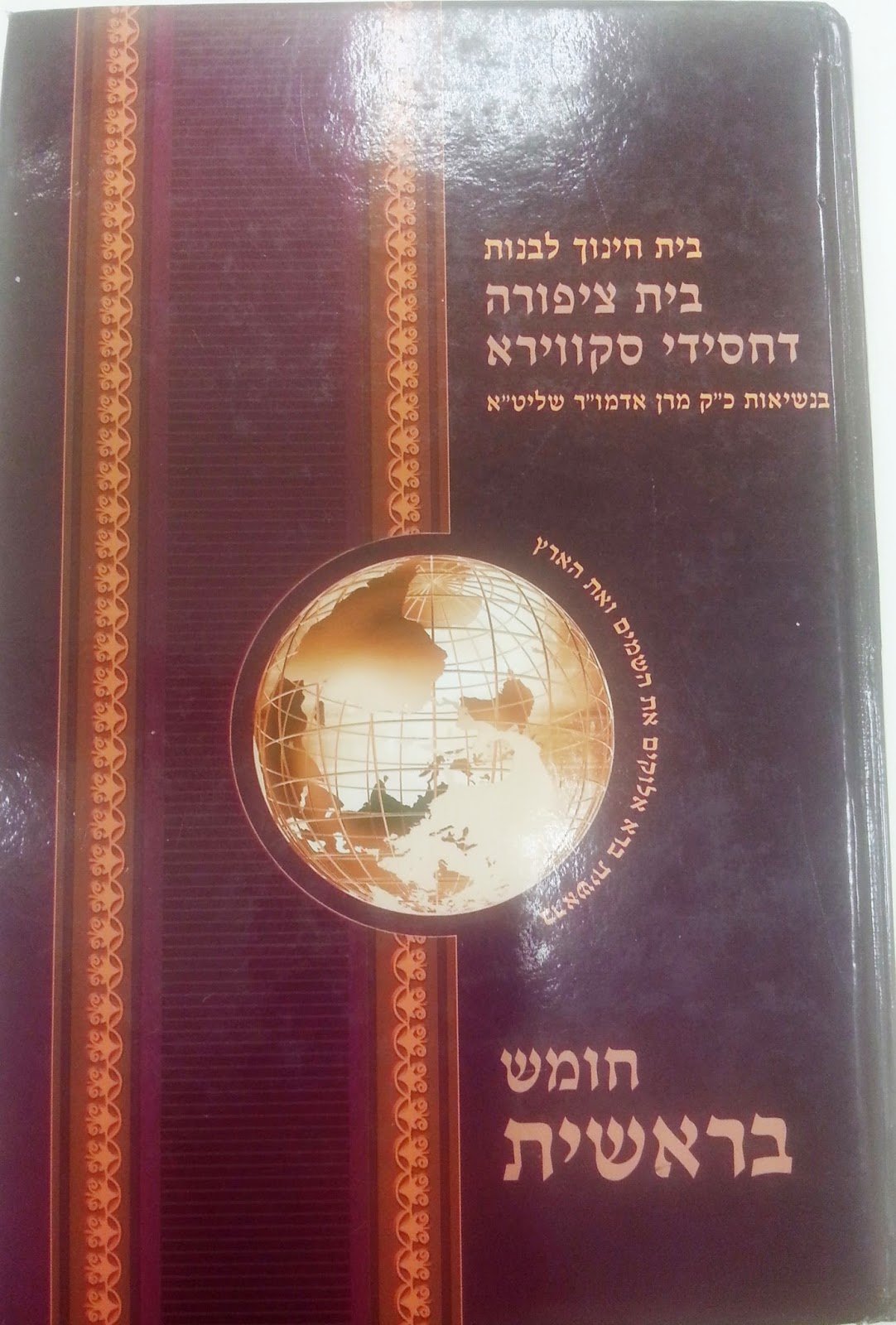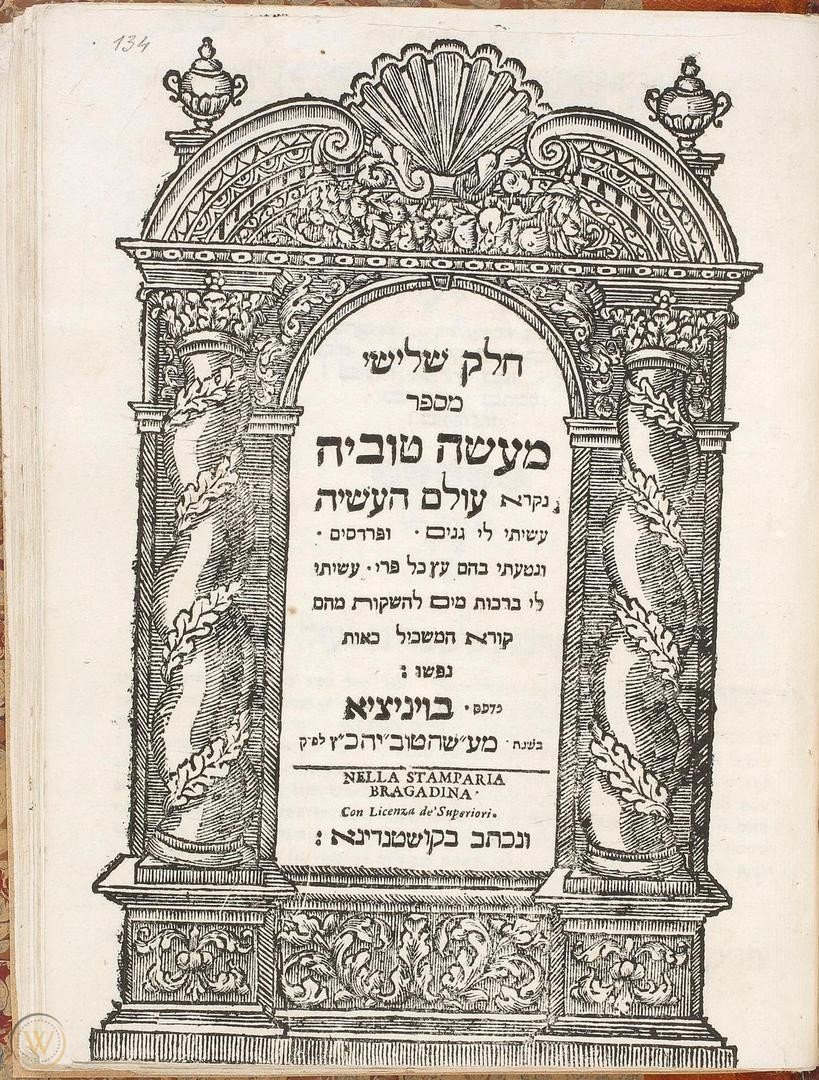On today’s page of Talmud is a discussion of how the person translating the Torah that was read out loud should behave. There were, it turns out, portions that were not to be translated, because they described episodes that were not particularly elevating.
מגילה כה,ב
ואלו נקרין ולא מתרגמין (רעבד"ן סימן) מעשה ראובן נקרא ולא מתרגם ומעשה ברבי חנינא בן גמליאל שהלך לכבול והיה קורא חזן הכנסת ויהי בשכון ישראל ואמר לו למתורגמן (הפסק) אל תתרגם אלא אחרון ושיבחוהו חכמים
The Tosefta also states: And these sections are read but are not translated….The Tosefta states that the incident of Reuben is read but not translated. And there was an incident involving Rabbi Ḥanina ben Gamliel, who went to the village of Kavul, and the sexton of the synagogue was reading: “And it came to pass, while Israel dwelt in that land, that Reuben went and lay with Bilhah, his father’s concubine; and Israel heard of it” (Genesis 35:22). Rabbi Ḥanina said to the translator: Stop, translate only the end of the verse. And the Sages praised him for this.
Another passage that is not to be translated is that of the Golden Calf:
מַעֲשֵׂה עֵגֶל הַשֵּׁנִי נִקְרָא וְלֹא מִתַּרְגֵּם. אֵיזֶה מַעֲשֵׂה עֵגֶל הַשֵּׁנִי — מִן ״וַיֹּאמֶר מֹשֶׁה״ עַד ״וַיַּרְא מֹשֶׁה״
The second narrative of the incident of the Golden Calf is read but not translated. What is the second narrative of the incident of the Golden Calf? Aaron’s account of what had taken place, from “And Moses said to Aaron” (Exodus 32:21) until “And Moses saw” (Exodus 32:25).
Some holy words in the Torah are best left untranslated. It is an odd way of viewing what is, after all, considered by traditional Judaism to be the word of God, but it is a view that goes back to the Talmud itself. And it has some surprising modern correlates.
Modern Examples of Censoring the Torah
In what is popularly called the Silberman English translation of Rashi published in London in1929, the risque Rashis were not translated. But more recently the Jewish censorship of the Torah was taken to a whole new level by the Hasidim of New Square in New York.
As David Assaf pointed out several years ago, the Hasidim of New Square published their own version of the Torah, in which several sections are just missing. It was (not surprisingly) published “for girls.”
This and all the images here are from here.
Here, for example is the story of Lot and his daughters. You may recall that in the Torah, Lot’s two daughters get Lot drunk and seduce him, committing a horrible act of incest. Twice. Here is the story as told in the Torah:
בראשית יט: 29–38
(לא) וַתֹּאמֶר הַבְּכִירָה אֶל הַצְּעִירָה אָבִינוּ זָקֵן וְאִישׁ אֵין בָּאָרֶץ לָבוֹא עָלֵינוּ כְּדֶרֶךְ כָּל הָאָרֶץ. (לב) לְכָה נַשְׁקֶה אֶת אָבִינוּ יַיִן וְנִשְׁכְּבָה עִמּוֹ וּנְחַיֶּה מֵאָבִינוּ זָרַע. (לג) וַתַּשְׁקֶיןָ אֶת אֲבִיהֶן יַיִן בַּלַּיְלָה הוּא וַתָּבֹא הַבְּכִירָה וַתִּשְׁכַּב אֶת אָבִיהָ וְלֹא יָדַע בְּשִׁכְבָהּ וּבְקוּמָהּ. (לד) וַיְהִי מִמָּחֳרָת וַתֹּאמֶר הַבְּכִירָה אֶל הַצְּעִירָה הֵן שָׁכַבְתִּי אֶמֶשׁ אֶת אָבִי נַשְׁקֶנּוּ יַיִן גַּם הַלַּיְלָה וּבֹאִי שִׁכְבִי עִמּוֹ וּנְחַיֶּה מֵאָבִינוּ זָרַע. (לה) וַתַּשְׁקֶיןָ גַּם בַּלַּיְלָה הַהוּא אֶת אֲבִיהֶן יָיִן וַתָּקָם הַצְּעִירָה וַתִּשְׁכַּב עִמּוֹ וְלֹא יָדַע בְּשִׁכְבָהּ וּבְקֻמָהּ. (לו) וַתַּהֲרֶיןָ שְׁתֵּי בְנוֹת לוֹט מֵאֲבִיהֶן. (לז) וַתֵּלֶד הַבְּכִירָה בֵּן וַתִּקְרָא שְׁמוֹ מוֹאָב הוּא אֲבִי מוֹאָב עַד הַיּוֹם. (לח) וְהַצְּעִירָה גַם הִוא יָלְדָה בֵּן וַתִּקְרָא שְׁמוֹ בֶּן עַמִּי הוּא אֲבִי בְנֵי עַמּוֹן עַד הַיּוֹם.
Thus it was that, when God destroyed the cities of the Plain and annihilated the cities where Lot dwelt, God was mindful of Abraham and removed Lot from the midst of the upheaval. Lot went up from Zoar and settled in the hill country with his two daughters, for he was afraid to dwell in Zoar; and he and his two daughters lived in a cave. And the older one said to the younger, “Our father is old, and there is not a man on earth to consort with us in the way of all the world. Come, let us make our father drink wine, and let us lie with him, that we may maintain life through our father.” That night they made their father drink wine, and the older one went in and lay with her father; he did not know when she lay down or when she rose. The next day the older one said to the younger, “See, I lay with Father last night; let us make him drink wine tonight also, and you go and lie with him, that we may maintain life through our father.” That night also they made their father drink wine, and the younger one went and lay with him; he did not know when she lay down or when she rose. Thus the two daughters of Lot came to be with child by their father. The older one bore a son and named him Moab;dAs though me-’ab “from (my) father.” he is the father of the Moabites of today. And the younger also bore a son, and she called him Ben-ammi; As though “son of my (paternal) kindred.” he is the father of the Ammonites of today.
And here is the passage as printed in the Square Chumash for Girls:
Can you see what they did? The text jumps from 19:30 to chapter 20, skipping the eight verses that describe the incestuous encounter.
Want another example? Ok, how about the passage in Genesis 38 that describes Yehudah’s encounter with a prostitute, who turns out to be his daughter-in-law, who he then condemns to death until she produces proof that Yehudah had in fact been the one to get her pregnant. It’s not exactly material for young ears. So in Square, they censored it. As you can see below, their version of the Torah for Girls jumps from chapter 37 straight to chapter 39. No prostitution here.
Silly, or Educational?
But before we condemn this as silly, let us pause for a minute. The rabbinic leaders in Square (which, incidentally, is named after Skver or Skvyra, in present-day Ukraine) had a precedent from today’s page of Talmud: the translator would just leave these passages untranslated. Of course then, the original text of the Torah was still being read out loud, but if no-one understood it (which is why there needed to be a translator in the first place) that doesn’t really do very much.
If you are a parent or a grandparent or a teacher, would you choose to read these stories from the Torah to your young charges? If not, why not? And if not, what’s wrong with not including them in a childrens’ Torah? Perhaps, not very much.










